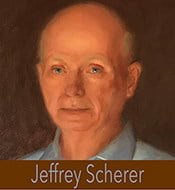Milton said “First there was chaos, the vast immeasurable abyss, outrageous as a sea, dark, wasteful, wild.” From this chaotic beginning, humans began to craft objects to deal with health, safety, utiliity and pleasure. Each one of us has a different relationship to objects. We choose them based on utility, aesthetics, memory, associations or simply intuition. Some objects are pre-made; some custom made. This post is about the relationship between these objects our emotions and the search for perfection.
For our house in Mexico, we have tried to create a space that will hold objects in their overall relationship to each other and the room. We crafted the proportion of the rooms to respect the historical nature of the late 19th century architecture in Merida. This proportional logic was extended to the new spaces.
Lea and I both have different, yet also similar, relationships to the objects we have collected, commissioned and created.
For Lea, her relationship is entwined with her history of design, her wonderful “eye” and the lessons she learned from her father, including: “take care of your tools and your tools will take care of you.” Objects matter to her. When they are violated, through misuse, vandalism or neglect, it stirs within her a dissonance that is visible in her body language. She has such a refined “eye” that she sees every imperfection. This attribute is wonderful but, at times, can lead to frustration that not everyone shares her ability and caring. Here in Mexico we are finding this to be particularly true and, at times, the frustration swells within her and stirs deep emotions.
For me, my relationship to objects is bound to my upbringing. I was not, like Lea, surrounded by aesthetically beautiful or well made objects. My parents respected well made things–but our financial circumstances led to “home made” and “store bought” objects. Even so, they were cared for. My father taught me first and foremost how to fix things. It was better to repair than buy. It was better to “re-purpose” than to buy new. So, when I view an object my first instinct is to figure out how it was made and how, when the time comes, I can “fix it.” I have, since becoming an architect (and, marrying Lea) taught myself about objects. I have learned about designers, materiality and craft. I know what I like and now, happily, can afford to acquire nice things. Ironically, this financial ability has led to buying less–and only buying what is exceptionally well made.
The dilema that we are facing now is reconciling this relationship with objects and our equally powerful instinct to seek perfection and harmony–a spatial balance that creates within us a calm. We are not naive and know that perfection is an elusive goal that is never really reached. Most definitions of perfection follow this logic: an impossiblity, something unattainable, something that cannot be reached..ever. Does this “impossibility” mean we should just resign ourselves to imperfection? Or is the journey to reach perfection itself enough to satisfy ourselves that we care and will not give up the search?
We have learned during the process of building this house in Mexico that we will likely never get to where we imagine we should be. We will not be able to change the culture of the Mexicans. We can not expect someone who has not learned about art and craft to suddenly understand what we are trying to achieve. At the best, we can be patient and keep trying to create teaching moments for those who want to learn. This has, slowly, worked for some of the people building our house. For others, it is simple impossible (and has lead to us firing one contractor.) We have, however, learned that there is also beauty in the imperfect–especially for objects where the human intervention is clear. This is the case of our new dining table. We purposely made sure the table was not “over finished”. The top, from 3 simple boards, was hand planed instead of being machined. When you run your hand over the surface you can feel the undulations created by uneven pressure on the plane by the muscles of the workman. This experience telegraphs the creation of the object. It conveys human intervention. It creates the perfect contradiction: through imperfection the table is perfect.
This is my definition of perfection: when human intervention is intentional and deliberately focused on highlighting the intrinsic qualities of the object and not subjugating these qualities through neglect, misuse or lack of care. A bit wordy, I know. But as Roland Barthes has written, an object has three types of messages: linguistic, coded (symbolic) and literal. Each reinforces the other. In the case of our table, it is called a table, symbolizes communion, and is, in fact, a wood table.
My favorite philosopher, Ludwig Wittgenstein, strove his whole life to reach a perfect world. He spent endless hours searching for the perfect word. He even agonized over gifts like the perfect handkerchief for a friend. His friends suffered his impatience with imperfection. His seriousness in life and his search for perfection has been described as one of the reasons he was hard to live with and may have been why so many thought of him as an unhappy person. I personally believe his search for perfection was exactly why he is regarded as one of the greatest philosophers ever. For me, searching and impatience will be part of our lives–and will, when all is said and done, be why we walked on this earth.



Great article! We just returned from our first trip to Merida where we rented a home that was beautifully composed – every angle was considered as well as the scale of both furniture and objects. Your article really hit home. Thanks!
Thanks Dana… Next time you are in town let me know.
I will – we really enjoyed Merida! So nice to be home to more sub-zero temps…..
A perfect place for that painting, too. Formally, the warm hints in the wild brush strokes echo both the color of the table and the patterns in the floor. Emotionally, it seems like a doorway to an inverse of the room, in a mirror darkly, a shadow in the bright sunlight. It must be satisfying to setting all that up.
Thanks Kurt. It does work well in this spot.
It has been a pleasure to watch the progress of your new home in Merida. We were renting the house in back of you (Susan Outerbridge) when the building began so, it was exciting to see what you have done with the space. We will be returning to the house for 2 weeks from 2/22 – 3/8 during our 7 week stay in the area. Our thoughts of relaxing in the court yard have kept us warm during this cold spell in the north. The people, music and culture of Merida and throughout the Yucatan brings us back for longer stays each year. We hope we will cross paths during our visit.
Hope Golden and Tom Fay
Syracuse New York
email when you get here, Hope…we can get together.